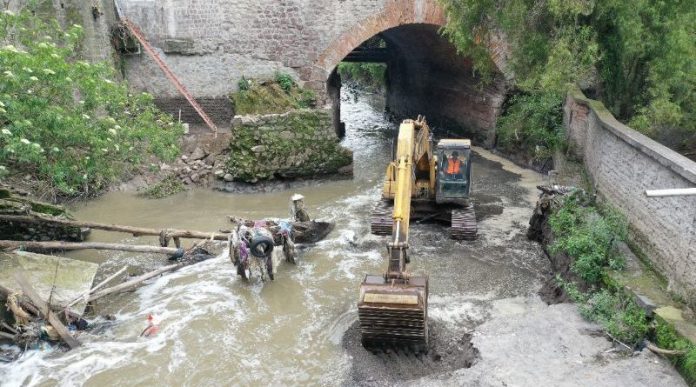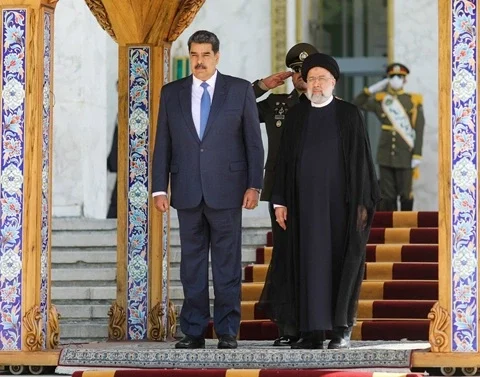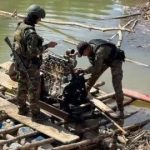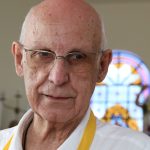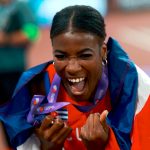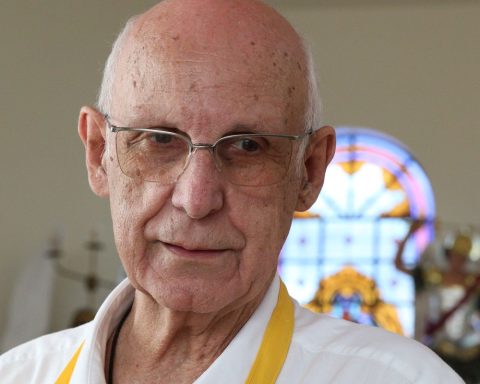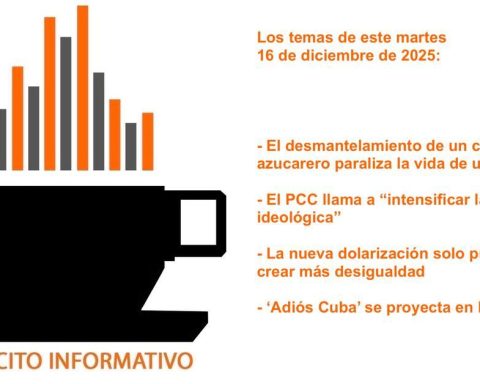Capital rivers with human and animal feces impact agricultural production and health. In addition, they contaminate other provinces, such as Esmeraldas.
“Go down a pipe, go under your house, go under your family. reaches a riverthe shepherd drinks it, the vaquitas drink itwater the fields. It reaches the sea, it is drunk by the little fish that you eat yourself‘says the song’My little yellow water‘ by the Spanish band Los Toreros Muertos. That stanza also describes quite well the journey and impact of the wastewater that is not treated.
In Quito, this type of liquid is only treated in 3%, confirm Othon Zevallosmanager of the Metropolitan Public Drinking Water and Sanitation Company (epmaps).
The data is alarming, admits the professor and researcher of the Institute of Microbiology of the San Francisco de Quito University (USFQ), Antonio Machado.
The researcher adds that the city only has a treatment plant: that of Quitumbewhat’s wrong with it capacity to purify the waters of 75,000 inhabitants. This means that “it is not capable of meeting the needs of a capital city that has three million people.”
health consequences
The impact of not treating the pollutants discharged into the city’s rivers was analyzed at USFQ. There, the researchers concluded that the 18 rivers of the capital are contaminated “not only with microorganisms, but also with metal and other chemical components that are outside the provisions of the Law,” says Machado.
The Ministry of Environment manages parameters that allow establishing that the water of a river meets quality criteria. Thus, a liter of water must contain a maximum of 0.3 milligrams (mg/L) of fats or oils, to be suitable for consumption.
This is far from what happens in the main rivers of the city, where pollution is well above that measure. The Machangarapresents 12.8 milligrams per liter, the nuns 16mg/L and the Guayllabamba 10.5mg/L.
missing budget
Zevallos indicates that there are “three major projects” to treat contaminated water. The first and largest is the Vindobona plant, which is defined, but depends on very important financing. “For the work, around a billion dollars are needed, which, obviously, neither the company nor the city has.”
To start up this plant, a public-private alliance is managed.
On the other hand, the epmaps Has got a non-reimbursable loan of $800,000 from the Development Bank of Latin America. That amount will be used for the studies and designs of a treatment plant in Tumbaco, “with a view to the subsequent financing of the works,” Zevallos details.
In addition, the company is seeking financing for a project to clean the waters of the rivers in the Los Chillos Valley.
“If these three projects were completed, Epmaps would practically go from 3% to 98%”, says Zevallos. However, the administration of Mayor Santiago Guarderas will end in 2023.
“The important thing is to leave the financing closed and the authorities that come will be able to continue these projects. If we don’t do anything today, if we don’t do those studies (…) that will never be done”, adds the manager of Epmaps.
possible solutions
While the Municipality seeks financing for large works, sewage continues to contaminate rivers, affecting life in the capital and polluting the waters of coastal provinces, such as Esmeraldas.
Zevallo mentions that the effects of sewage in Quito are so serious that they even generate an impact in the Galapagos area.
Machado says that a short-term action would be to divide the responsibility for the sources of contamination. “As long as there is no possibility of establishing a wastewater treatment network throughout the capital, one action is to identify the sources of contamination at the industrial, agricultural and daily activities of people and filter part of the polluting sources”.
A first measure, according to the expert, would be to create an ordinance that makes the textile, meat and other product industries carry out a previous treatment before discharging their waste. Meanwhile, in the agricultural area, measures should be encouraged so that the fertilizer processes are more degradable “to minimize the impact.”
He adds that much of the wastewater can be reused and used for irrigation in agricultural areas. Without treatment, however, they become an attack on health and the environment.
the most vulnerable
Vulnerable people whose recreational activities are concentrated along rivers or who are in places where drinking water is still a debt they can experience serious damage to their health by receiving untreated water from Quito. This is the case of Esmeraldas, where it is estimated that more than 200 neighborhoods do not have sufficient access to safe water and are supplied by tankers.
“Gastrointestinal illnesses, massive diarrhea (…) these organisms in the water, over a long period of time, begin to show resistance to drugs,” warns the researcher. Later, there would be liver and kidney problems and metal toxicity could increase, in 20 or 50 years, the cancer cases.
Escherichia coli and coliforms (human and animal fecal bacteria) have been detected in Quito’s rivers, in addition to chemicals and metals (copper, zinc, aluminum, iron and manganese). (AVV)
“As long as there is no possibility of establishing a wastewater treatment network, one action is to identify the sources of contamination and filter part of the polluting sources”.
Antonio Machado, professor and researcher at the Institute of Microbiology of the Universidad San Francisco de Quito.
A escala nacional los ríos Guayas y Machángara son los más contaminados
Quito has a coverage of:
Drinking water, 99%
Sewage, 98%
Wastewater treatment, 3%
La única planta de tratamiento de Quito depura el agua de 75.000 habitantes, cuando la ciudad tiene 3 millones.
